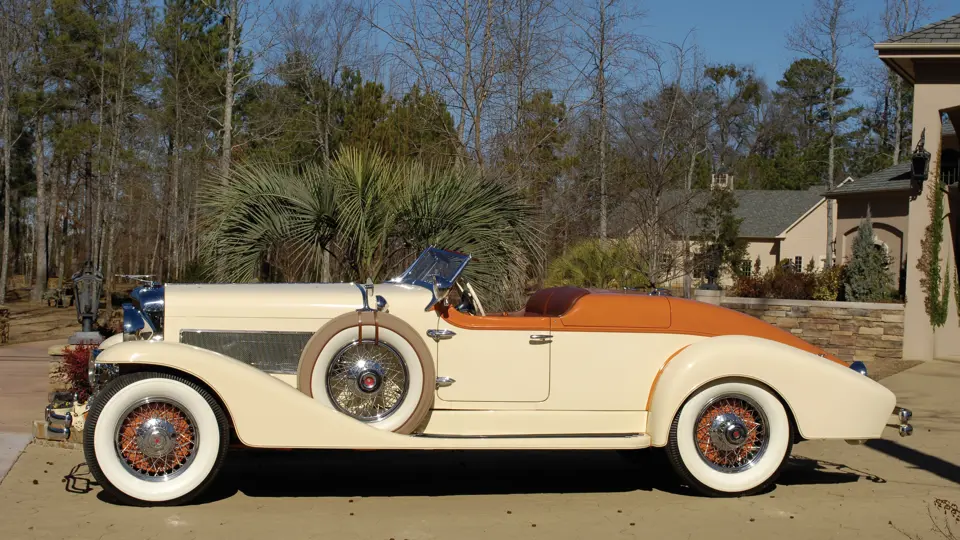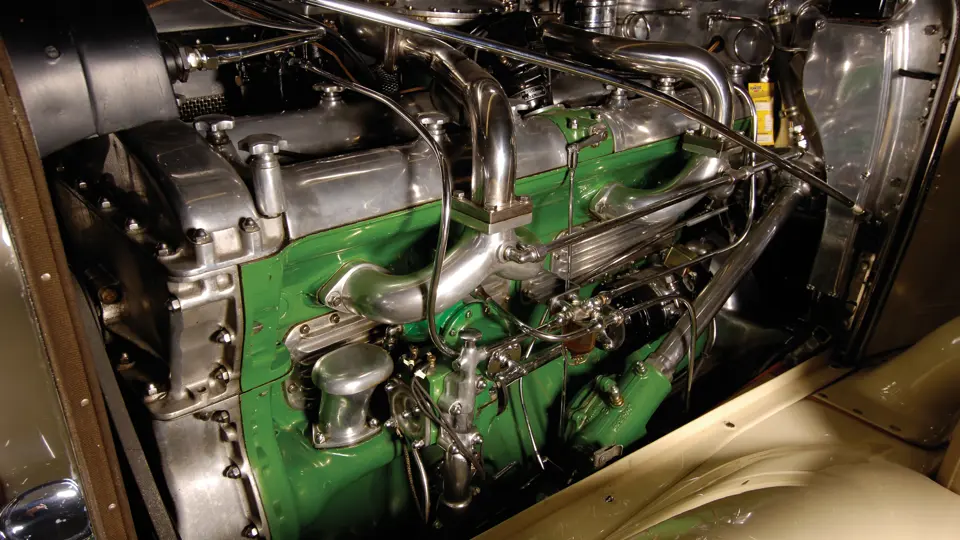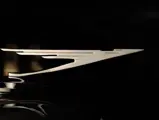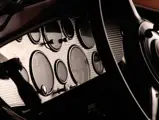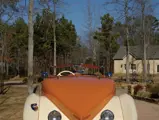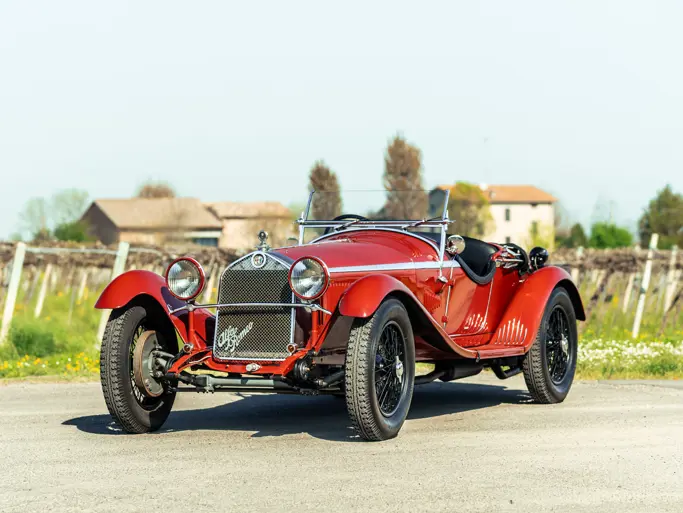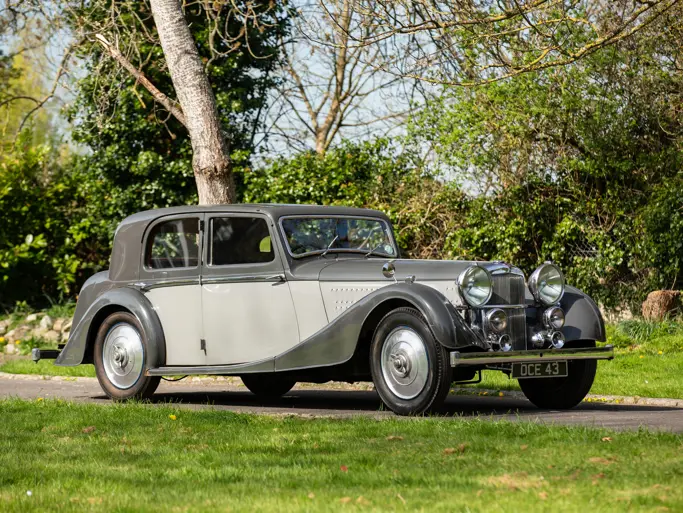320 hp at 4,200 rpm, 420 cu. in. dual overhead camshaft, four valves per cylinder inline eight-cylinder engine with centrifugal supercharger giving five psi boost at 4,000 rpm, three-speed manual transmission, front and rear semi-elliptic leaf springs, four-wheel hydraulic drum brakes. Wheelbase: 142.5"
- Offered from a prominent private collection
- Formerly the property of Raymond Lutgert, Rick Carroll and the Kughn Carail Collections
- Attractive boattail body with supercharged engine
The Model J
The Duesenberg Model J’s introduction on December 1, 1928 at the New York Auto Salon was front-page news. The combination of the Duesenberg reputation with the Model J’s grand concept and execution made it the star of the show – and the year. Duesenberg ordered enough components to build 500 Model Js in the first year, while development continued for six months after the Model J’s introduction to ensure the highest possible build quality. The first customer delivery came in May 1929, barely five months before the notorious stock market crash on Black Tuesday.
The Duesenberg Model J delivered 265 horsepower in stock form and 320 horsepower when fitted with the optional supercharger. Duesenberg built just 36 SJs at the factory; properly converting a standard J to SJ specification was no small job. The engine required complete disassembly to fit high-performance tubular connecting rods and numerous other components. The SJ also required external exhaust manifolding to fit the supercharger under its hood, and the resulting dramatic chromed flexible tubes became its signature.
The effect of the Model J Duesenberg on America can’t be minimized. Even in the misery of the Depression, this paragon of power and luxury was a symbol of prosperity and success. Duesenberg’s advertising became a benchmark, featuring the wealthy and privileged in opulent surroundings with only a single line of copy: “He drives a Duesenberg.” Even today, “She’s a real Duesy” still means a slick, quick, smooth and desirable possession of the highest quality. At the turn of the twenty-first century, the Duesenberg J remains the ultimate symbol of high-performance luxury.
J134
The inspiration for the lines of J134 comes from coachwork commissioned by Denver, Colorado resident Mr. Harry G. Liebhardt later in the 1930s as a second body for his Duesenberg (chassis number J507), which was originally supplied carrying Convertible Sedan coachwork by Derham. A stately and handsome car in its own right, it seems that Mr. Liebhardt decided that Colorado summers required something more sporting. Ultimately, Liebhardt commissioned the Walton Body Shop in Denver, Colorado to begin construction of a second body that could be easily mounted to his chassis. The body was to be sleek and in the style of a boattail speedster. Unfortunately, the car was never completed, and the known history of the car ceases in the late 1930s until the project – with the Walton Speedster body – was acquired by Bill Harrah. This car would become the inspiration for the coachwork designed for and fitted to J134. Moreover, some of the parts from the Walton Speedster were incorporated in the coachwork now fitted to J134.
Meanwhile, another car, J134/2159 was originally delivered as a LeBaron Convertible Berline for Cord Corporation Attorney Robert Gill. Little is known about the subsequent history of Gill’s convertible berline, although it is likely that it was broken up for parts in the 1940s as various components have surfaced in other Duesenberg restorations. Many of the parts were ultimately purchased by Harrah for use in other projects.
Mr. Harrah had other plans for the Duesenberg chassis and opted to store the period Walton Speedster body while he focused on creating an alternative Speedster body. He commissioned Maurice Schwartz, one of the founders of noted coachbuilder Bohman and Schwartz, to design a new speedster body in the style of the original Weymann Boattail Speedster.
Ultimately, Mr. Bill Craig, who had acquired engine J134 from Harrah, persuaded Harrah to sell him many of the original parts from J134. Craig assembled the Duesenberg using another chassis of unknown manufacture, but probably built by Frank Heiss, and fitted engine J134 along with firewall #2159. Mr. Craig owned the Duesenberg project for some time before ultimately selling the car to the late Mr. Rick Carroll of Florida.
When the J134 project was acquired by Rick Carroll, it was in need of a full restoration. No one knows today how much, if any, of the original Walton Speedster body remained with the car, but we do know that Mr. Carroll contacted noted restorer Bob Gassoway in the early 1970s to investigate the potential for restoring the car to show standards. Mr. Gassoway explained in a letter to a later owner, Mr. Richard Kughn, that Mr. Carroll disliked the proportions of the Walton Speedster, and therefore Carroll commissioned Mr. Gassoway to rebuild the car and improve both the craftsmanship and the lines of the car. Former Duesenberg designer Mr. Herbert Newport was brought in to design the new coachwork. It was at about this point that Mr. Carroll elected to sell the car.
Ultimately, the Duesenberg was purchased by Carroll’s longtime friend and noted Rolls-Royce collector Mr. Raymond Lutgert. After several meetings with Bob Gassoway, the project was again on track, only now Mr. Lutgert was to be the proud owner following the car’s completion in 1977. The newly redesigned body had gone through an extensive transformation under Newport and Gassoway’s guidance. The rear section of the car had been changed extensively, as had the grille and hood, which now reflected the traditional Duesenberg look. It is likely that the supercharger was fitted during the course of the restoration.
Following the restoration, the Duesenberg was displayed at the 1977 Auburn Cord Duesenberg Meet where it was shown to the public for the first time and was toured by Mr. Lutgert at the event. Shortly thereafter, the car was sold to Mr. Kughn, who entered into a long tenure of ownership. Notably, Mr. and Mrs. Kughn actually sold the Duesenberg in the late 1980s to an overseas buyer, but around 1998 they elected to return the car to the collection once again. The Duesenberg was purchased by Mr. Gene Ponder in 2003 at the Carrail Collection sale in Detroit, and he immediately set out to get the Boattail Speedster in optimum running condition. Ponder later sold the car to the vendor in 2007.
Currently, J134 is in very presentable overall condition. The cream and orange paintwork appears to be in very good condition, without spidering, cracking or any significant damage or wear. The tan canvas top, with deep caramel leather interior and tan top piped in matching leather, both appear to be in excellent overall condition. The condition of this Duesenberg is commensurate with the car’s indicated low mileage, as it has been driven less than 1,000 miles since the restoration’s completion in 1977.
It is complete with many desirable accessories including Pilot Ray driving lights, chrome wire wheels and whitewall tires. The engine is presentable but shows minor signs of use and would benefit from a thorough detail. Additionally, a Stromberg UUR carburetor is also fitted. Though now an older restoration, the Duesenberg is a very presentable example that has held up very well over the years. It shows nicely and is an impressive sight in its distinctive color scheme.
This magnificent and distinctive Duesenberg will afford its next owner inclusion in a circle as exclusive now as it was over 70 years ago. Few Duesenbergs offer the striking lines of the example offered here. We encourage personal inspection, as this sporting two-seat Speedster offers handsome coachwork, grand style and unparalleled performance. RM Auctions encourages any interested parties to contact one of our specialists with any specific questions.


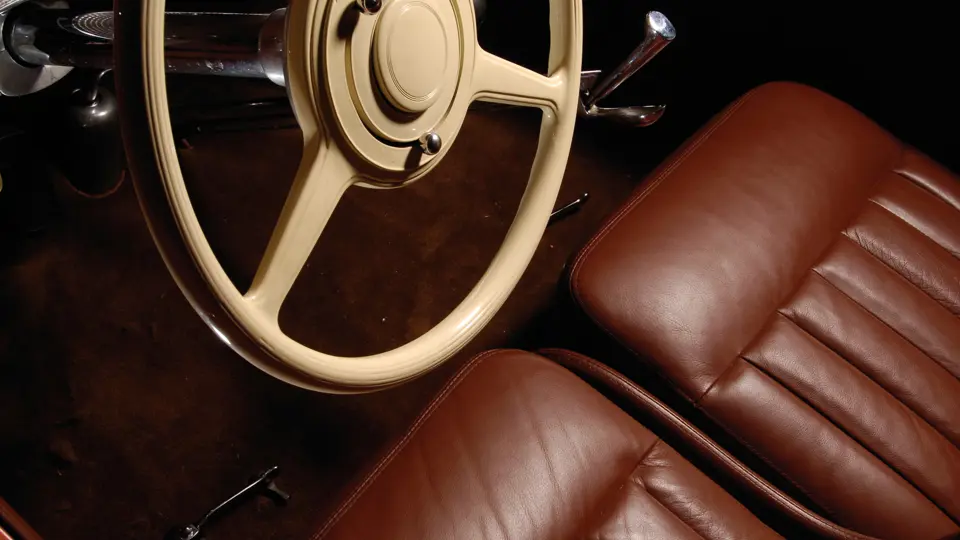

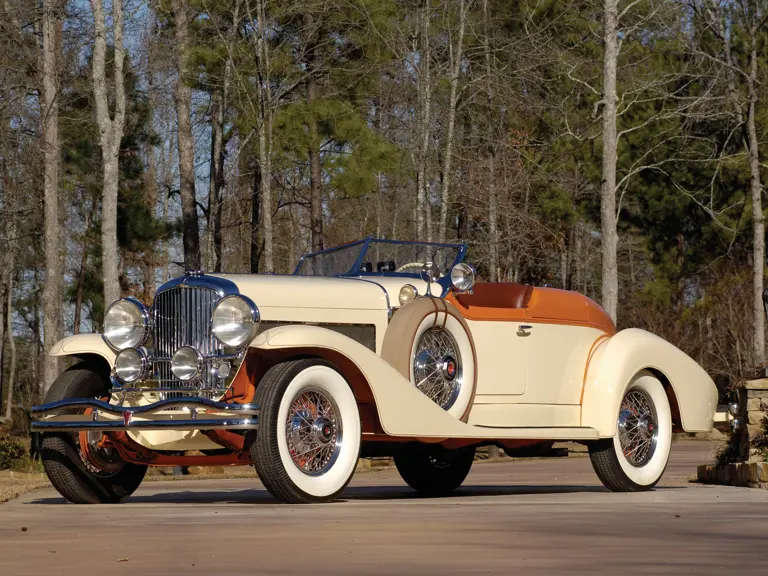
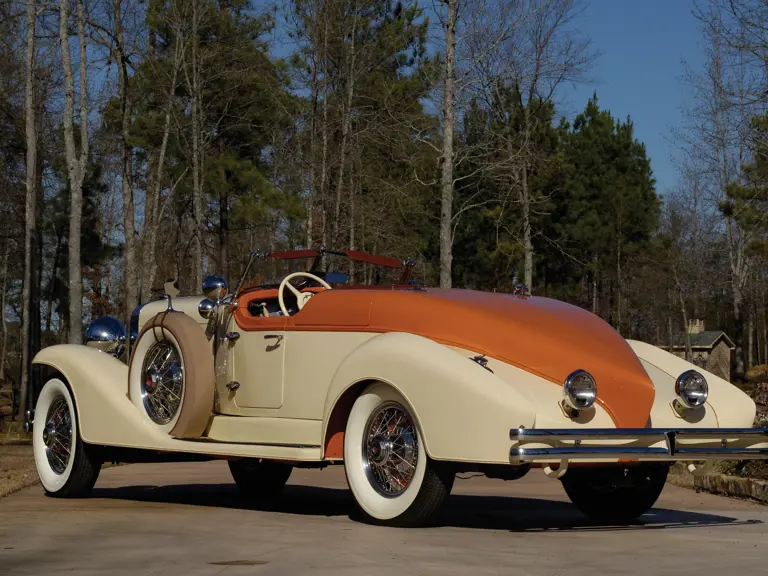
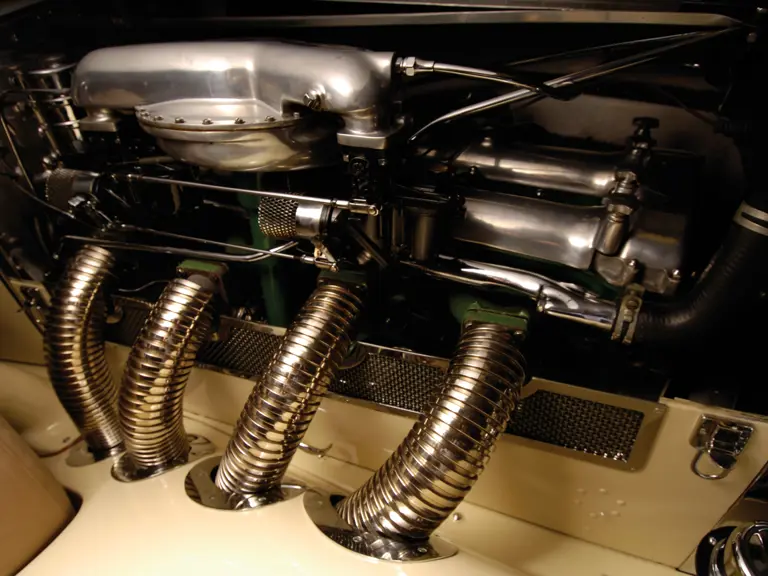
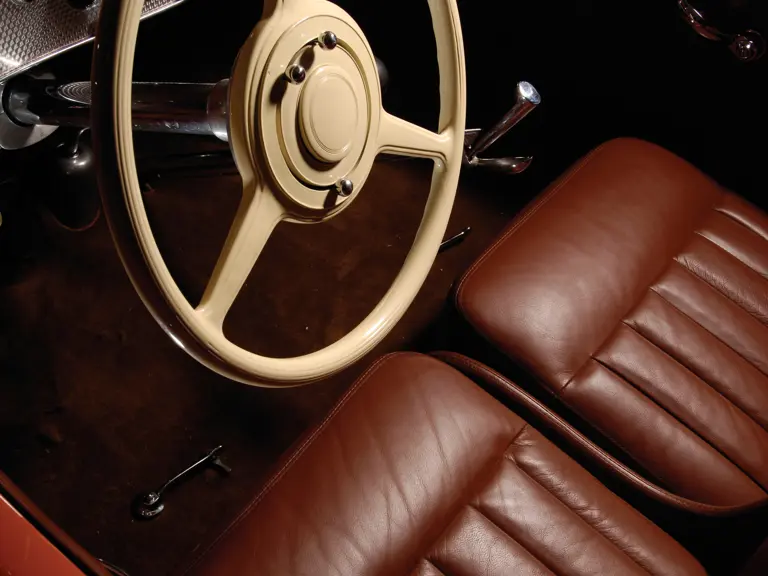
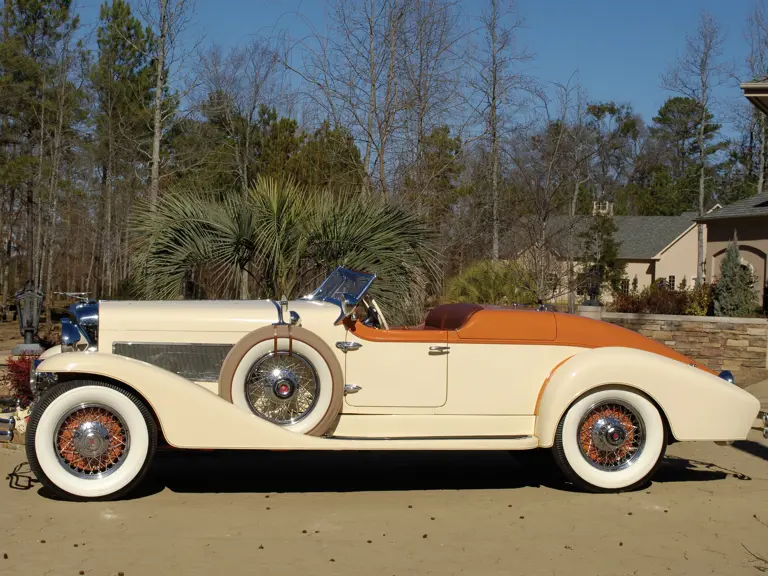
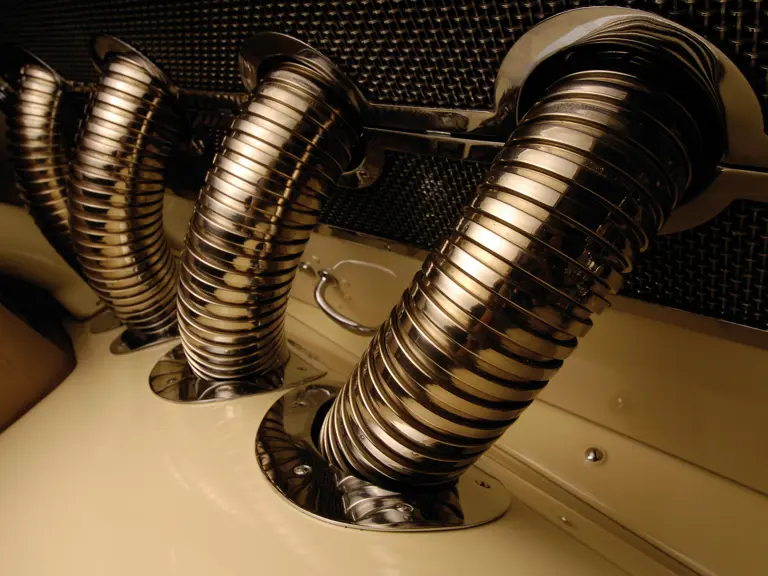
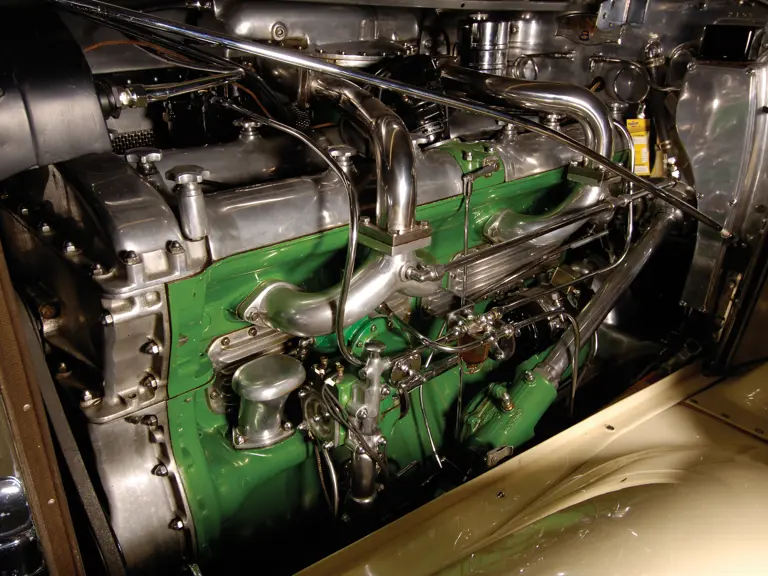
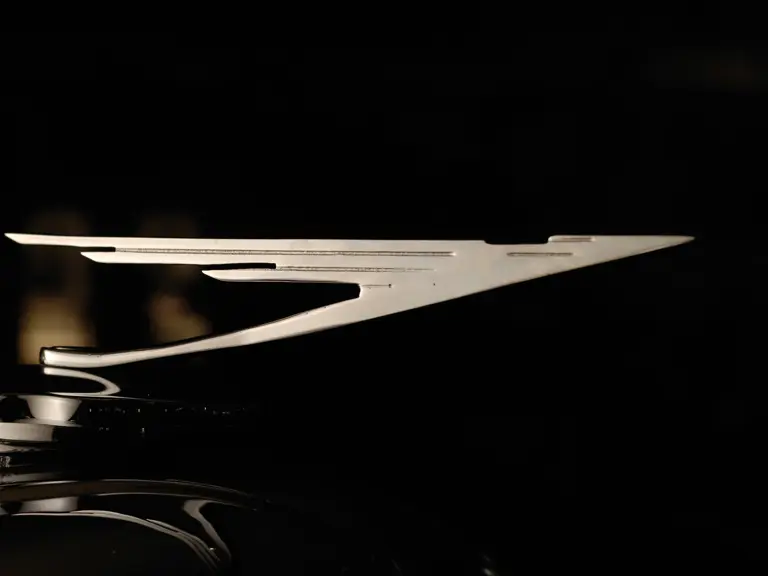
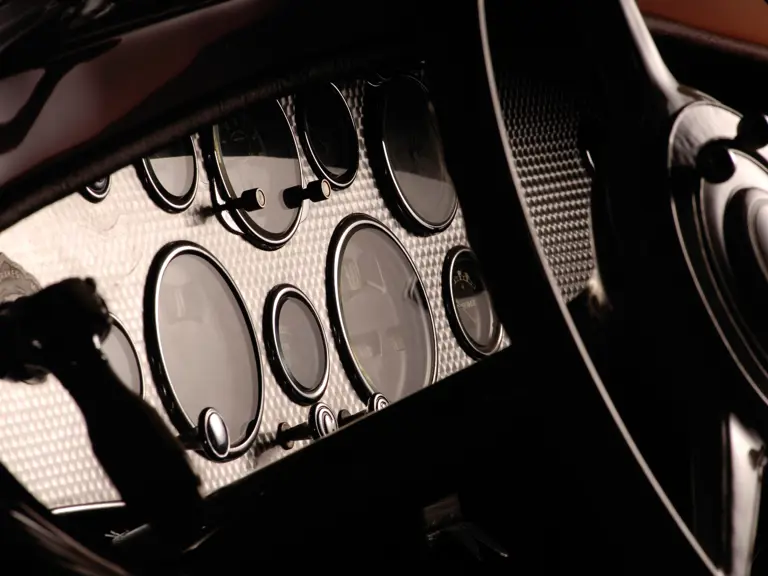
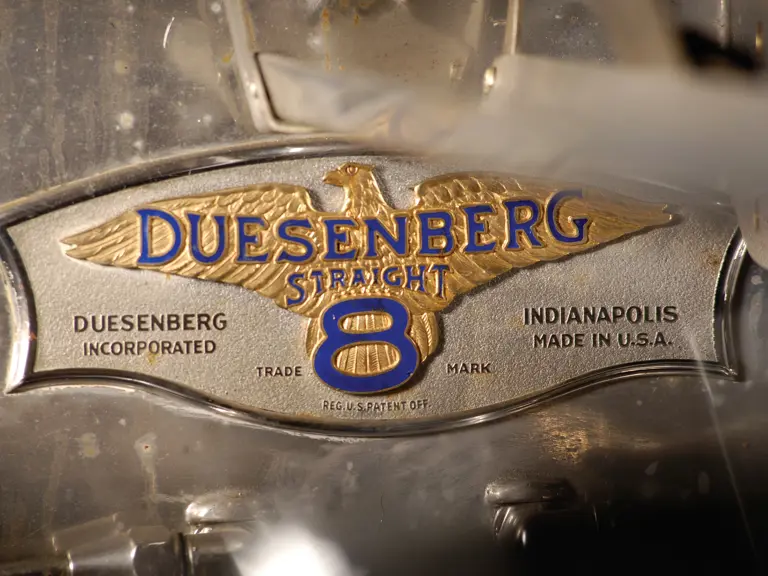
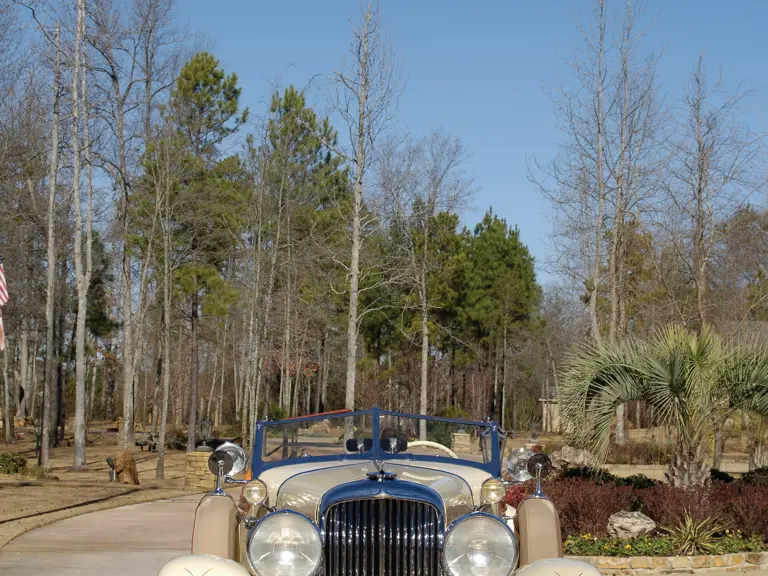
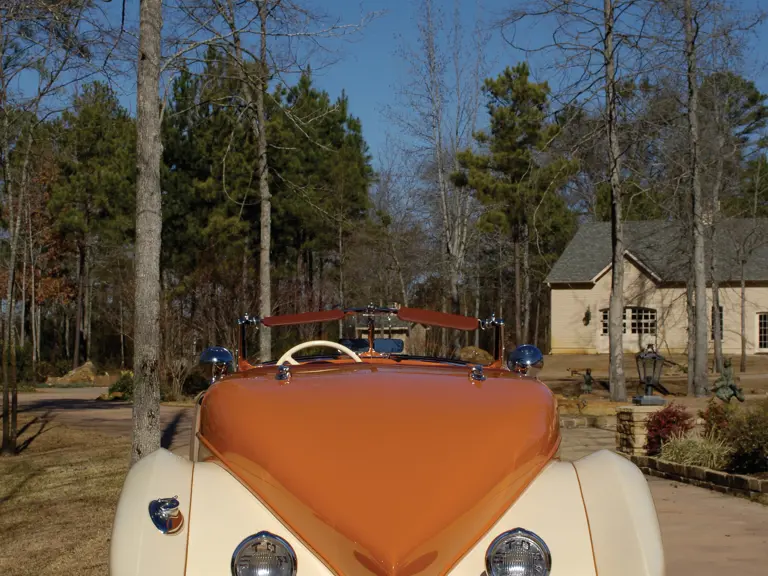
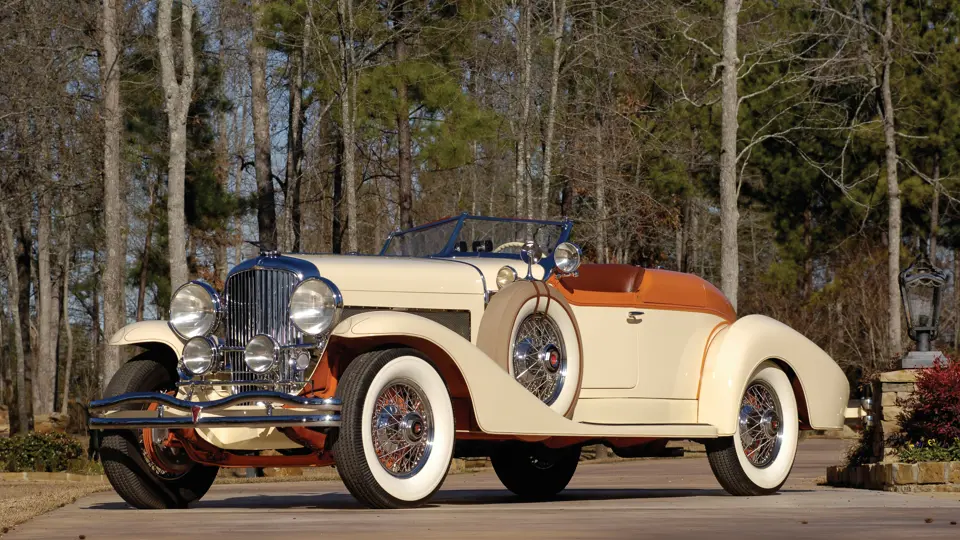
 | Plymouth, Michigan
| Plymouth, Michigan
